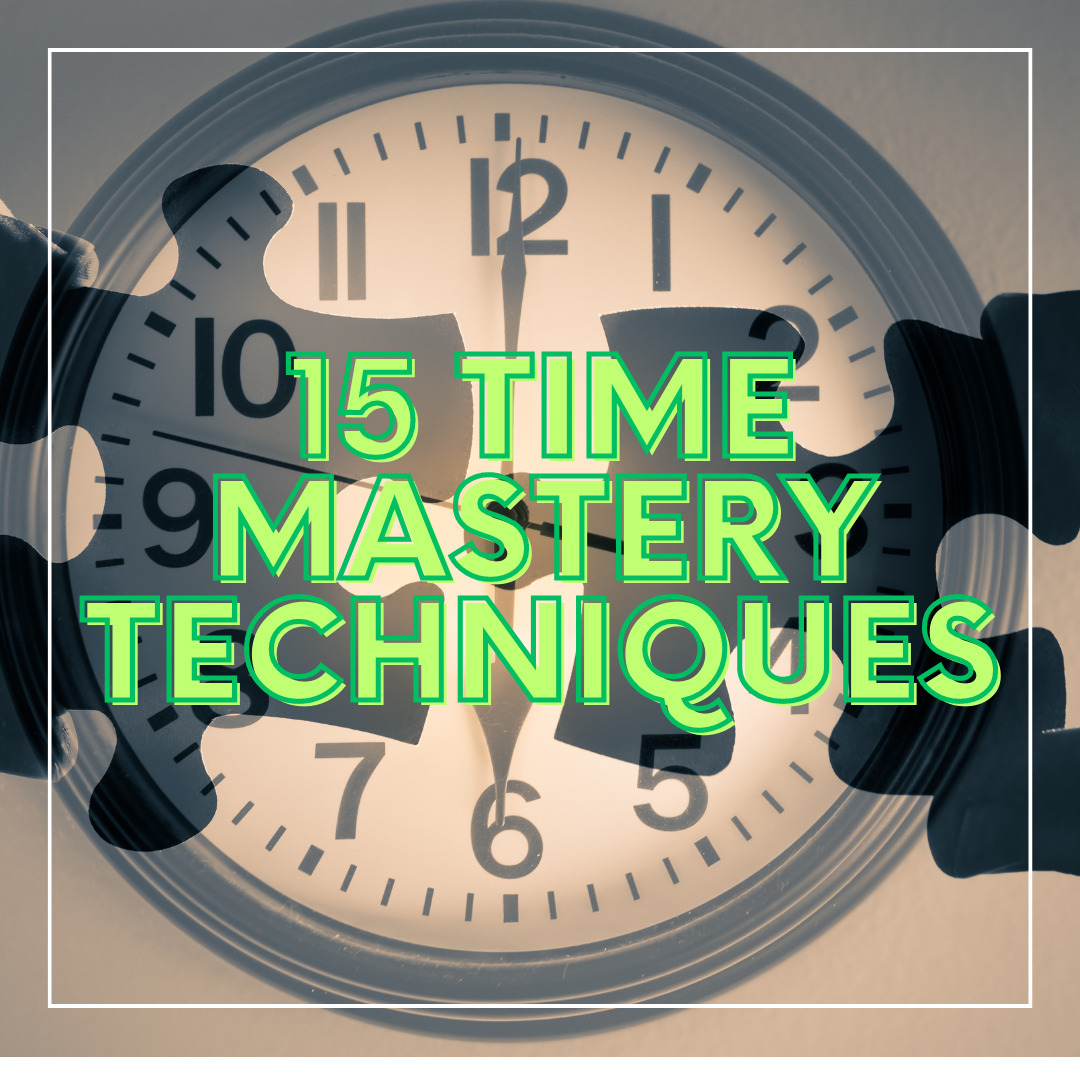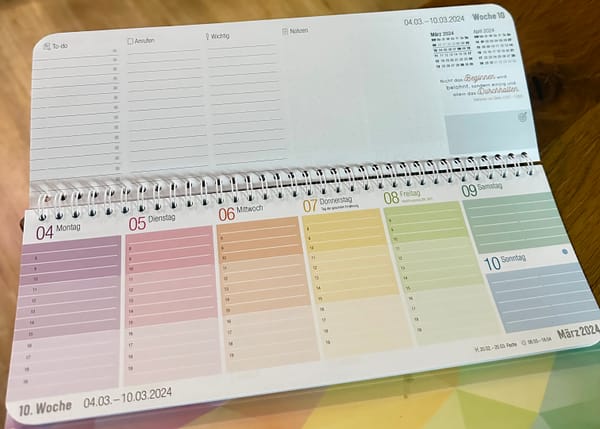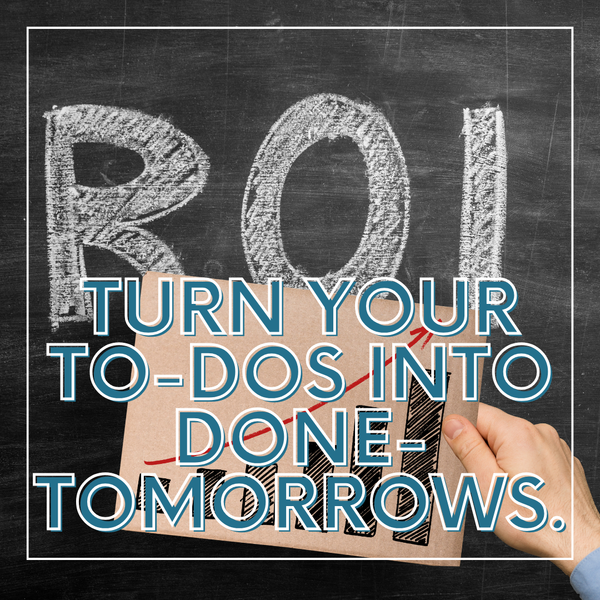Boost Your Productivity: 15 Powerful Techniques to Achieve Your Goals
Boost productivity with 15 powerful techniques: 10-10-10 Method, high-value activities, $25,000 Method, Jerry Seinfeld Method, Not-to-do List, 60-60-30 Technique, Pomodoro Technique, Energy Curve, Kanban, 1 min To-do List, GTD, Eat the Frog, Eisenhower Matrix, Pareto Principle, Parkinson's Law.

Staying organized and accomplishing tasks efficiently is essential for success. Are you struggling to manage your time effectively and feeling overwhelmed by the numerous demands on your plate? Don't worry. This comprehensive article will explore 15 powerful productivity techniques that can revolutionize your work and help you achieve your goals.
1. The 10-10-10 Method: Making Informed Choices
The 10-10-10 method is a decision-making technique that can profoundly impact your productivity. By considering the consequences of your choices in three timeframes: 10 minutes, 10 months, and 10 years, you gain valuable insights into the short-term and long-term effects of your decisions. This approach enables you to make more informed choices, prioritize tasks aligned with your long-term goals, and avoid distractions that hinder your progress.
2. High-Value Activities: Maximizing Productivity
Not all tasks are created equal. To boost your productivity, it's crucial to identify high-value activities that significantly impact your goals and yield tangible results. By focusing on tasks that generate the most value and align with your long-term vision, you can avoid getting caught up in low-value activities that don't contribute to your overall objectives. Prioritizing high-value activities ensures that your time and effort are invested in tasks that truly matter.
3. The $25,000 Method: Prioritizing ROI
Imagine having a limited budget of $25,000. How would you allocate that money to maximize returns? The $25,000 method applies this concept to your tasks by assigning a monetary value to each based on their importance and impact. By prioritizing tasks with the highest potential return on investment (ROI), you ensure that you focus on activities that deliver the most value for your time and effort.
4. The Jerry Seinfeld Method: Building Habits for Success
Consistency is key when it comes to building and maintaining habits. The Jerry Seinfeld Method, inspired by the comedian himself, offers a simple yet effective technique for staying on track. Using a calendar, track your progress daily and mark a big, satisfying X for each day you successfully complete a habit. The visual representation of your consistency becomes a powerful motivator, helping you maintain a chain of X's and avoid breaking it.
5. The Not-to-do List: Eliminating Time-wasting Habits
While to-do lists are valuable, creating a not-to-do list can be equally beneficial. A not-to-do list comprises activities you consciously decide to avoid or eliminate from your routine. By identifying and eliminating time-wasting or unproductive habits, you free up more time and mental space for tasks that truly matter. This approach allows you to focus on high-value activities and prevents you from getting sidetracked by unproductive tasks.
6. The 60-60-30 Technique: Time Management for Focus
Maintaining focus is essential for productivity. The 60-60-30 technique offers a time management approach that optimizes focus and productivity. It involves dividing your work into focused intervals of 60 minutes, followed by short breaks of 60 seconds, and a longer break of 30 minutes after every two cycles. This technique harnesses the power of concentrated work sprints and regular breaks to enhance productivity and prevent burnout.
7. The Pomodoro Technique: Mastering Timeboxing
The Pomodoro Technique, developed by Francesco Cirillo, is a popular time management method. It involves breaking your work into 25-minute intervals called "pomodoros," followed by short breaks. After completing a set number of pomodoros, you take a longer break. This technique leverages the principles of timeboxing and helps you maintain focus, improve productivity, and manage distractions effectively. Working in short bursts and taking regular breaks can enhance your concentration and tackle tasks with renewed energy.
8. The Energy Curve: Aligning Tasks with Energy Levels
Understanding your energy levels throughout the day is crucial for optimizing productivity. The energy curve technique involves identifying your peak energy periods and aligning your tasks accordingly. Schedule demanding and important tasks that require intense focus during your high-energy periods. Conversely, allocate less mentally or physically taxing activities to periods when your energy naturally dips. Capitalizing on your energy fluctuations allows you to work more efficiently and progress significantly towards your goals.
9. Personal Kanban: Visual Task Management
Managing and tracking tasks effectively is essential for productivity. Personal Kanban is a visual productivity system that helps you achieve this. It involves using a board or a digital tool to create columns representing different stages of your workflow, such as "To-Do," "In Progress," and "Completed." As you progress, you move tasks across the board, clearly representing your tasks and their status. Personal Kanban promotes transparency, focus, and effective task management.
10. The One Minute To-do List: Quick and Concise Task Organization
When tasks come flooding in, capturing and organizing them efficiently is crucial. The One Minute To-do List is a simple yet powerful technique for quick task management. You jot down tasks as they come to mind on a piece of paper or a digital note-taking app. The key is to keep the list short and concise, focusing only on the most important tasks. By minimizing the time spent on list-making, you can prioritize action and start tackling tasks immediately.
11. Getting Things Done (GTD): Comprehensive Productivity Methodology
Developed by David Allen, Getting Things Done (GTD) is a comprehensive productivity methodology that can transform your approach to work. GTD emphasizes capturing all tasks, ideas, and commitments in an external system to free up mental space. It involves systematically collecting, processing, organizing, reviewing, and engaging with your tasks. By implementing GTD, you gain clarity, reduce stress, and increase productivity by ensuring nothing falls through the cracks.
12. Eat the Frog: Tackling the Most Challenging Tasks
"Eat the Frog" is a metaphor popularized by Brian Tracy, encouraging you to tackle the most challenging or unpleasant task first thing in the morning. Completing the most difficult task early on eliminates procrastination and sets a productive tone for the rest of the day. This technique helps you overcome mental resistance, build momentum, and accomplish other tasks more efficiently.
13. The Eisenhower Matrix: Prioritising Tasks Effectively
The Eisenhower Matrix, named after President Dwight D. Eisenhower, is a prioritisation tool that categorises tasks into four quadrants based on their urgency and importance. It consists of four sections: "Urgent and Important," "Important but Not Urgent," "Urgent but Not Important," and "Not Urgent and Not Important." By sorting tasks into these categories, you can identify and prioritise tasks effectively, ensuring that you focus on the most critical activities first.
14. The Pareto Principle: Maximising Effort for Results
The Pareto Principle, also known as the 80/20 rule, states that roughly 80% of your outcomes come from 20% of your efforts. Applying this principle to productivity, you focus on the tasks and activities that yield the most significant results. By identifying and prioritising the vital few tasks that contribute the most to your goals, you can maximise your productivity and achieve more with less effort. This principle helps you allocate resources wisely and focus on the most impactful tasks.
15. Parkinson's Law: Imposing Time Constraints
Parkinson's Law states that work expands to fill the time available for its completion. By recognising this tendency, you can set strict deadlines and create a sense of urgency. By imposing time constraints on your tasks, you encourage efficiency and prevent unnecessary time wastage. This technique helps you maintain focus, avoid procrastination, and complete tasks within a reasonable timeframe.
Conclusion: Mastering Productivity for Success
Mastering productivity techniques is vital for achieving success. Incorporating these powerful techniques into your workflow allows you to optimise your time, increase focus, and accomplish more with less effort. Experiment with different methods to find what works best for you and adapt them to fit your unique needs and goals. Productivity is not about doing more; it's about doing the right things efficiently.
By implementing these 15 productivity techniques, you can regain time control, stay organised, and achieve your goals. Whether you choose to utilise the 10-10-10 Method, the Pomodoro Technique, or any other technique mentioned in this article, the key is to take action and consistently apply these strategies to your daily routine. Start implementing these techniques today, and you'll soon experience a transformation in your productivity and overall effectiveness.
Feel free to add tips and thoughts to this page's comment section, Twitter or LinkedIn!
Best regards,
-- Martin from Deliberate-Diligence.com





